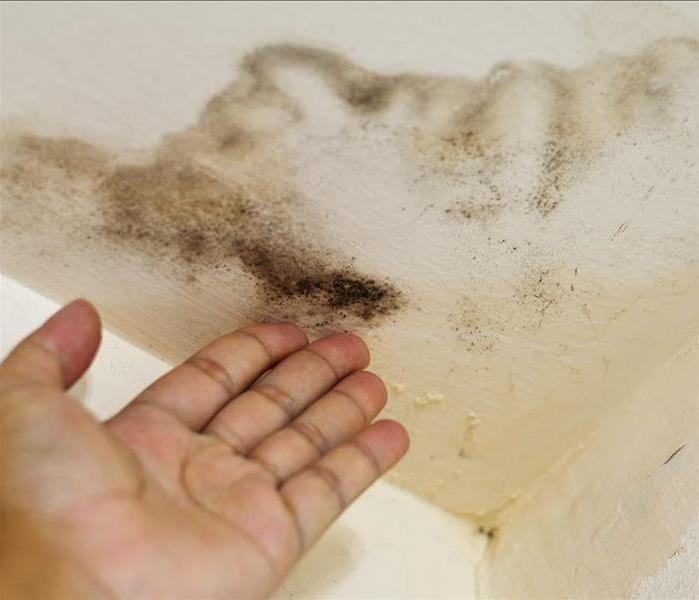What Causes Discoloration of Ceiling Tiles?
4/20/2018 (Permalink)
Dropped tile ceilings are an inexpensive and popular feature of many commercial buildings in Gladstone, MO.
For the most part, they remain just outside of our notice, silently creating a barrier between occupied spaces and the rafters above. But every once in a while, a particular tile or group of tiles starts to look a little bit different from the others. There are a number of reasons for tile discoloration, ranging from aging to tile mold.
Determining the Cause: Common Culprits
- Age. Dropped tile ceilings became popular in the 1950s. Older tiles look different from newer tiles, in part because of changes in the materials and processes used to manufacture the tiles. Older tiles may also have been exposed to cigarette smoke or other pollutants, which can make them appear darker in color. Check building records to see how old your ceiling tiles are, and whether there are tiles of different ages in different areas.
- Lighting. Ultraviolet light can cause tile discoloration. Hospitals and labs frequently use UV light to sterilize equipment, and UV rays are commonly used to cure inks, coatings and adhesives. Ceiling tiles that are exposed to these types of light can take on a different hue over time. Check for sources of UV light in your building.
- Water damage. When ceiling tiles are exposed to water because of problems in the plumbing, HVAC system or roof, they take on a brownish color. If the source of the water is not repaired, tile mold can take hold, making the tiles even darker in appearance.
Replacement is Quick, Easy and Important
Fortunately, most ceiling tiles are easy to replace, and bringing your ceiling back to its original uniformity is a quick and inexpensive process. If the discoloration is caused by tile mold, be sure to replace the tiles as soon as possible, as mold can spread quickly to other porous surfaces.



 24/7 Emergency Service
24/7 Emergency Service
